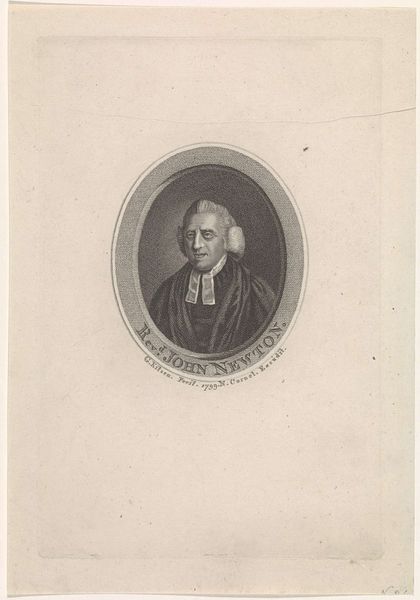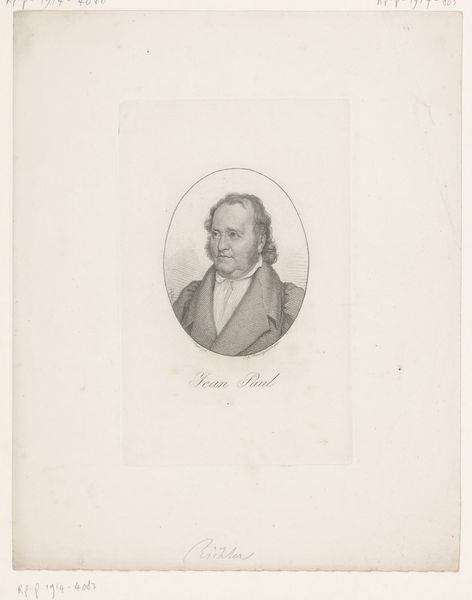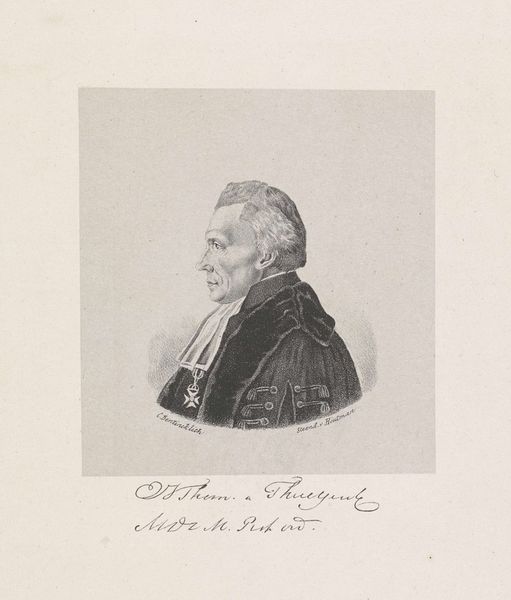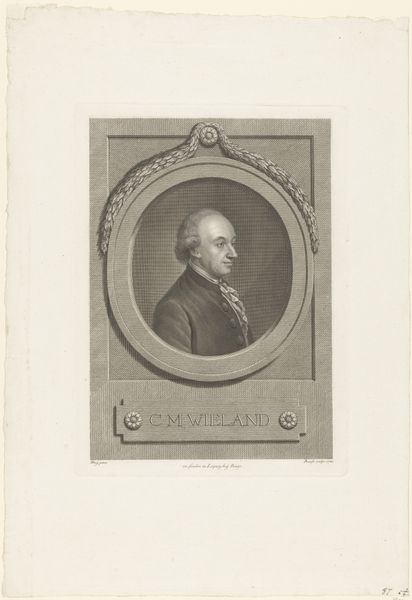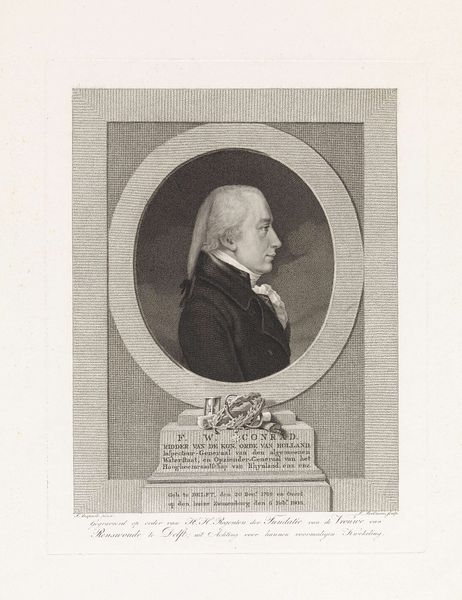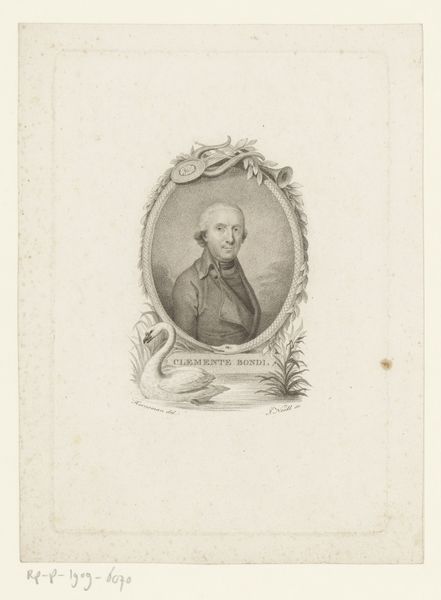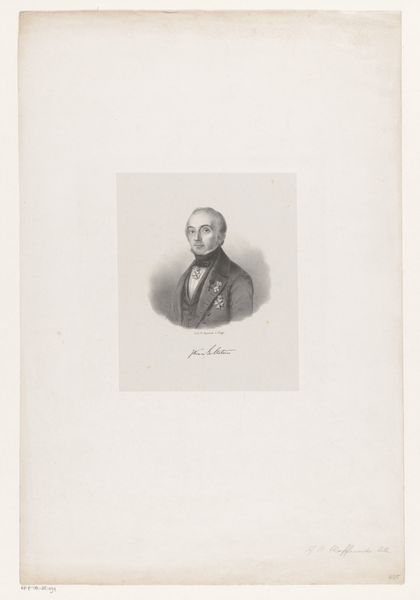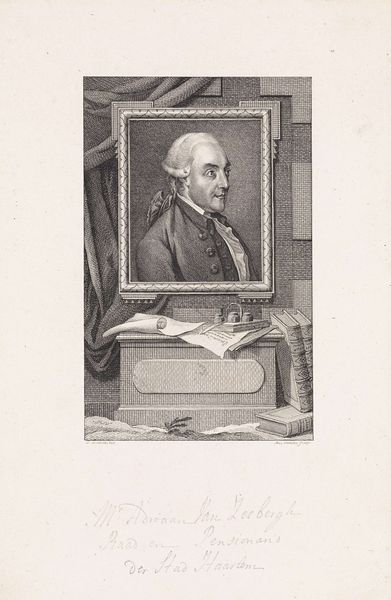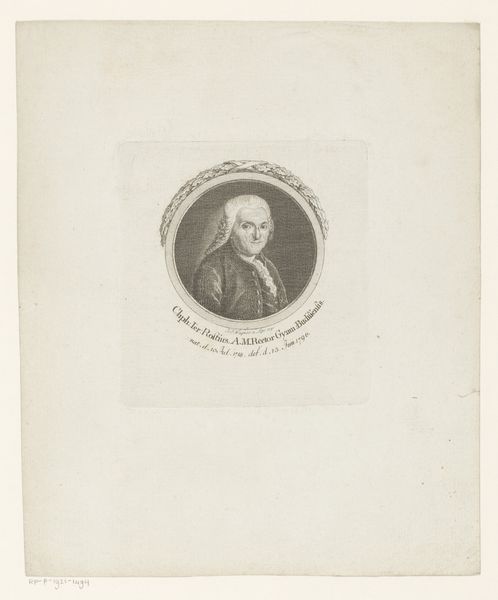
Dimensions: height 210 mm, width 133 mm
Copyright: Rijks Museum: Open Domain
Curator: This engraving from 1797 is entitled "Portret van geestelijke Benedetto Fenaja" or "Portrait of the cleric Benedetto Fenaja", and it’s by Carlo Lasinio. I find its starkness immediately compelling. Editor: The image certainly evokes a certain austerity. It's all lines and carefully controlled tonal gradations, isn't it? Look at how Lasinio has rendered Fenaja’s habit—the meticulous cross-hatching that suggests a heavy woven material, quite likely wool. And how those minute details contribute to the portrait’s overall gravitas and believability as the likeness of a historical figure, with particular relevance for this cleric. Curator: Indeed. Let's examine the symbolism embedded within. The circular frame surrounding the portrait carries the inscription "SERMO IERIUS POTESTATE Plenus EST Ecclcs.," essentially conveying that this is a person who is invested with sacred knowledge and influence of his status. It makes me consider, how does such a representation become a symbol for not just an individual, but the embodiment of a cultural institution, maybe even values, or authority? Editor: Good point, this engraving likely was produced for mass dissemination. How efficiently could prints like these, using relatively accessible techniques and materials, manufacture and proliferate ideals and representations of faith? I wonder, too, how many of these engravings would've been circulated, in what format they were disseminated—loose leaf, bound? Also, who owned them, who was permitted or privileged enough to hold these images? The details would undoubtedly cast the object’s value into light and also influence how people respond to them and shape society. Curator: The image seems rather formal given its apparent method of distribution. Considering the symbols and portrait in their entirety, there appears to be no visual flamboyance associated with Fenaja as an icon. A portrait intended not just for memory, but as a sort of spiritual anchor in a period of societal flux. What this work visualizes, therefore, is faith’s enduring claim in times when institutions confront immense change. Editor: Exactly, understanding it not as a singular work, but as a point of confluence in a nexus of making and dissemination really does give you an understanding of how religious authority made the invisible visible.
Comments
No comments
Be the first to comment and join the conversation on the ultimate creative platform.
